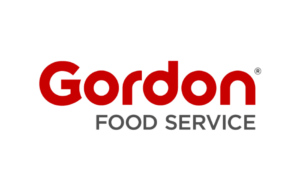When diners want to know more about what they’re eating, it pays to have answers.
When you look at food ingredient labels, do you struggle to understand them? For most of us, the answer is probably yes. With the plethora of food products available, we now need to understand ingredient terms such as natamycin, genetically modified organisms, grass-fed, natural, sodium citrate or artificial flavours and dyes.
What are they, and are they good for me? As consumers become more educated about ingredient terms and how food is grown, demand is trending toward foods in a simpler, whole form. According to Mintel’s 2016 trends forecast, “artificial” is public enemy No. 1, as “consumer demands for natural and ‘less processed’ food and drink are forcing companies to remove artificial ingredients.”
What is natural? There is no official industry definition, though it has come to mean “unaltered.” However, the word may be used to describe fresh meat and poultry products, as well as fresh veggies and legumes if the following criteria are met:
- no artificial ingredients/flavouring agents.
- no colouring ingredients.
- no added vitamins, minerals nutrients.
- no chemical preservatives.
- no processes that significantly alter the food’s original physical, chemical or biological state.
Natural, whole foods and less-processed foods are often referred to as “clean” foods because their ingredient statements have few items listed.
What are clean foods?
While there’s also no official definition for clean foods, the implication is that the closer a food product is to its whole, original form, the better it is for you; that means few ingredients or a product that uses familiar, easily identifiable ingredients. For example: To avoid artificial colouring, consumers may look for products that use fruit extracts to achieve bold colour. This is not to say that products that have been fortified—meaning ingredients such as vitamins and minerals were added to cereals, breads and beverages—are bad for you; it simply means the trend is getting back to the basics of clean, wholesome and less-processed foods.
Adding whole, clean foods to your menu
Based on popular interest in the clean-foods trend, there’s opportunity to serve customers accordingly. To get started, examine your list of items and their ingredient content. That should tell you right away which items are highly processed and where you might consider alternative ingredients or recipes. Quick, easy wins include making sauces, gravies and marinades from scratch.
Also, take a look at the meat you’re buying. You may not realize that some could be injected with sodium solutions, hormones, antibiotics and/or nitrates. Organic meat would ensure that the product does not contain antibiotics or GMOs and that no pesticides were used during the growing process. Some consider grass-fed animals to be in this category.
The surge of “veg-centric” eating is also an easy win when examining vegetable offerings on your menu. Offering vegetables in whole form such as portobello mushroom “steaks,” stuffed bell peppers with quinoa, caramelized cauliflower and Brussels sprouts speaks to the trend and probably will for several years to come.
And don’t forget beverages. Moving away from overly sweetened beverages to products that promote simple ingredients and natural flavours is definitely part of the whole, clean movement.
Promote the clean foods on your menu
Once you know the details of your menu and how you’re able to adjust it, the next step is to advertise it. You could have the “cleanest” menu on the planet, but customers won’t realize it unless you tell them.
Also, it’s a great time to note whether you purchase any local food, or what your stance is on the environment. This builds trust with consumers looking for transparency. If you’re going the extra mile to select organic, natural meats, make sure your customers know. You may communicate this in several ways: in the description of the menu item, with a symbol next to the item, or with a paragraph that specifies where and how you buy your food.
Learn More
Ask your District Sales Representative for help identifying clean-food products and for marketing support in promoting them.
Contact the Gordon Food Service Canadian National Menu Specialist, Canadian Nutrition Resource Centre (CNRC) for more information at (866) 814-1272, or nutritionrc@gfs.ca.
We can help
Information on the Gordon Food Service Clear Choice Program and the products offered can be found at gfs.ca/clearchoice. You are able to identify items with the attributes your customers may be seeking during ordering by applying filters.
Contact your Sales Representative for more information.









